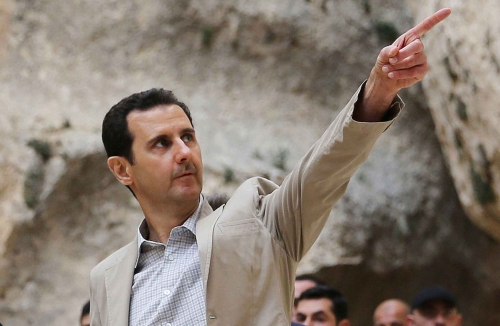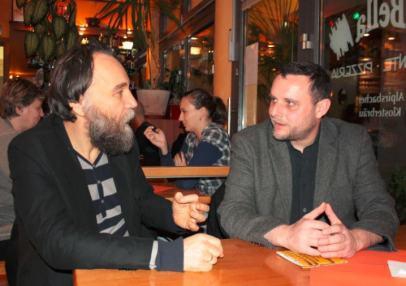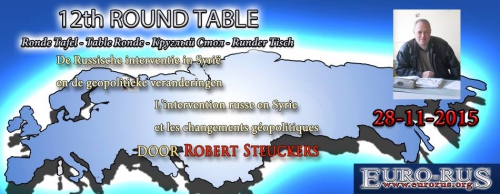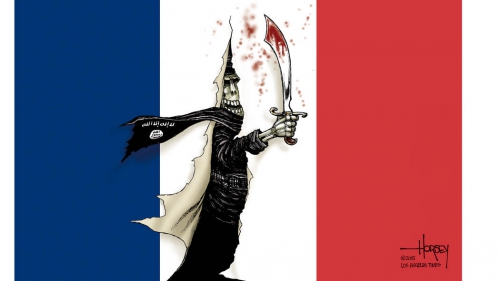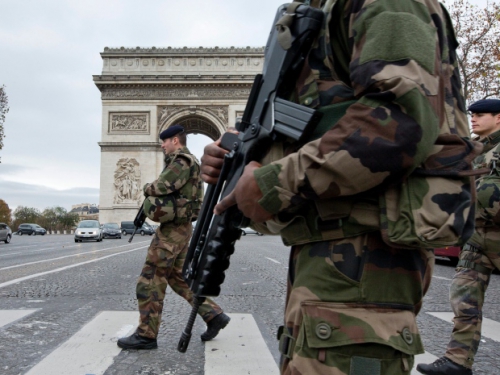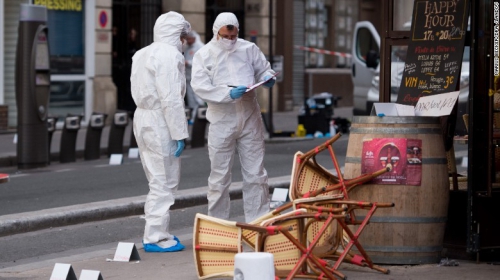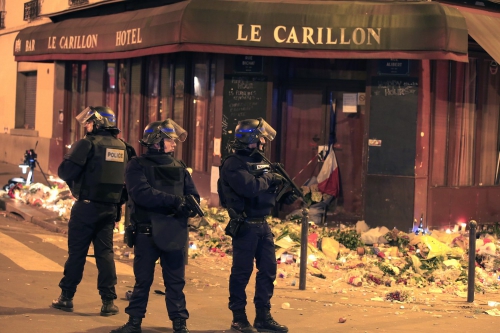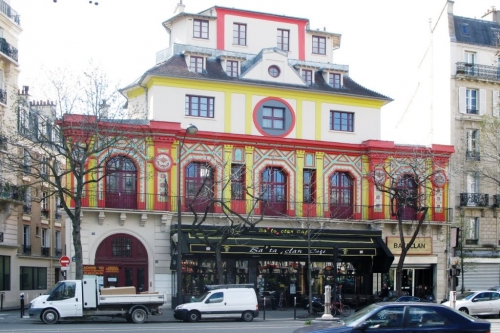Un article extraordinaire de Politico du 12 novembre, intitulé « Les attaques vont être spectaculaires », révèle que le directeur de la CIA George Tenet, et que son chef de l’anti-terrorisme, Cofer Black, avaient prévenu la Maison Blanche, mais qu’on leur avait répondu : « Nous ne sommes pas tout à fait prêts à examiner cette question. Nous ne voulons pas lancer le compte à rebours. » Comme le journaliste de Politico, Chris Whipple, l’explique ensuite : « Traduction: ils ne veulent pas qu’un écrit montre qu’ils avaient été avertis. »
Ça ne pourrait pas être pire. Bush savait que ça allait arriver, mais n’a rien fait pour l’empêcher. Il n’a même pas essayé. En d’autres termes, sa seule vraie préoccupation, à l’époque, était que ce soit fait d’une manière telle qu’on ne puisse pas prouver qu’il le savait – pour qu’il puisse nier qu’il avait laissé consciemment cela se produire. Il a bien insisté là-dessus. Et c’est ce qu’il a fait, il a toujours nié sa participation.
Whipple écrit ensuite:
Le matin du 10 juillet, le chef du département de l’agence qui surveillait Al-Qaïda, Richard Blee, a fait irruption dans le bureau de Black. « Et il a dit : Chef, ça y est. Le toit s’est écroulé, » raconte Black. « Les informations que nous avions réunies étaient absolument incontestables. Les sources se recoupaient. Et c’était en quelque sorte la goutte qui faisait déborder le vase. » Black et son adjoint se sont précipités dans le bureau du directeur pour informer Tenet. Ils sont tous tombé d’accord qu’il fallait organiser une réunion d’urgence à la Maison Blanche.
Cette réunion a eu lieu à la Maison Blanche. Mais avec Condoleezza Rice, la conseillère à la sécurité nationale et l’amie personnelle de Bush, et pas avec Bush lui-même – la possibilité de nier était l’obsession de Bush, et agir de cette façon permettait de la préserver; si on apprenait un jour que cette réunion s’était tenue, Rice serait la seule personne à devoir se justifier. Elle protégeait le Président, qui ainsi n’aurait pas à rendre de comptes sur le fait qu’il avait permis l’attaque – si un jour on lui en demandait. En dépit de l’importance et de l’urgence du problème, Bush n’a pas jugé utile de venir en personne parler à Tenet et à Black, ni de les interroger.
Black et Tenet ont été stupéfaits de sa réponse. Black a dit Politico : « Je continue à ne rien y comprendre. Je veux dire, comment est-il possible d’avertir ses supérieurs autant de fois sans que rien ne se passe ? C’est un peu comme dans La Quatrième dimension.*»
Toutefois, lorsque la Maison Blanche avait dit: « Nous ne voulons pas lancer le compte à rebours, » la réponse à ce mystère était déjà claire, et Black et Tenet étaient tous les deux des gens intelligents; ils savaient ce que ça voulait dire, mais ils savaient aussi qu’ils se mettraient en danger s’ils venaient à dire publiquement: La Maison Blanche avait l’intention de faire une déclaration du genre, « Nous ne savions pas que ça allait se produire, » après les faits. Et c’est, bien sûr, exactement ce que la Maison Blanche a dit. Et elle continue à le dire : le successeur de Bush n’a aucun intérêt à changer de version ; le président Obama a lui-même menti au public, quand il a dit, par exemple, que les attaques du 21 août 2013 au gaz sarin en Syrie avaient été perpétrées par les forces de Bachar al-Assad, alors qu’elles l’avaient été par les forces qu’Obama soutenait – et il savait pertinemment que c’était elles qui l’avaient fait – ; ou quand il a dit que le renversement, en février 2014, du président ukrainien Viktor Yanoukovitch – démocratiquement élu (mais corrompu comme la quasi-totalité des derniers dirigeants ukrainiens) – était une révolution démocratique, et non pas un coup d’Etat américain que sa propre administration avait commencé à préparer au printemps 2013.
George W. Bush vient d’une famille de pétroliers, et toute l’opération a tourné autour du pétrole. Un autre copain de Bush était «Bandar Bush», le prince Bandar bin Sultan al-Saoud, le membre de la famille royale saoudienne qui était à l’époque ambassadeur du Royaume à Washington, mais qui, par la suite, est devenu le principal stratège international de la famille Saoud. Wikipedia, par exemple, dit de lui qu’« après la fin des tensions avec le Qatar sur l’approvisionnement de groupes rebelles [pour renverser Assad en Syrie], l’Arabie saoudite (sous la direction de Bandar) a détourné ses efforts de la Turquie pour les orienter vers la Jordanie en 2012 ; il a exercé des pressions financières sur la Jordanie pour pouvoir y développer des camps d’entraînement supervisés par son demi-frère et adjoint Salman bin Sultan. »
Le président Obama continue de protéger George W. Bush, et d’empêcher la famille Saoud d’être poursuivie pour être le principal bailleur de fonds des djihadistes (« terroristes »), en maintenant au secret dans une prison fédérale l’homme qui avait servi Oussama ben Laden en tant que comptable d’Al-Qaïda et collecteur de fonds ; il se rendait surtout en Arabie saoudite, la patrie des Sunnites, mais aussi dans d’autres royaumes arabes sunnites, pour recueillir des dons en espèces de plusieurs millions de dollars pour la cause d’Al-Qaïda du djihad mondial, du liquide provenant, entre autres, du prince Bandar bin Sultan lui-même. Le comptable / collecteur de fonds a dit qu’ils payaient de gros salaires à leurs combattants. C’était des mercenaires tout autant que des djihadistes. Le comptable / collecteur de fonds a également dit que « sans l’argent des Saoudiens, rien ne serait possible ». Le témoignage du comptable / collecteur de fonds a été requis dans une affaire judiciaire initiée par des membres de la famille de victimes du 11 septembre, et même le président américain n’a pas réussi à l’empêcher, ou alors il s’en est servi pour signifier subtilement au roi saoudien que nous, les États-Unis nous sommes le boss et que nous pouvons le faire tomber, si Obama décide de le faire. C’est seulement grâce à la collaboration des médias étasuniens que le secret du financement du mouvement de djihad international pourra désormais être gardé.
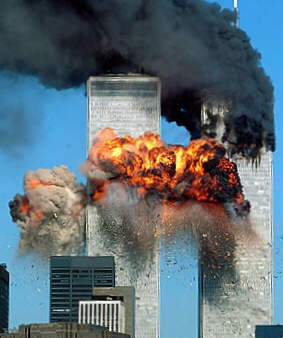 Mais l’aristocratie américaine ne veut certainement pas que le Président, dont ils sont propriétaires, le fasse ; après tout, les Saoud leur ont toujours énormément rapporté. Comme Thalif Deen de Inter Press Service l’a rapporté le 9 novembre 2015, «Le gros contrat d’armement d’environ 60 milliards de dollars d’armes avec l’Arabie Saoudite, est considéré comme le plus gros de toute l’histoire des États-Unis. Selon le Government Accountability Office (GAO.)**, l’organisme d’audit apolitique du Congrès des États-Unis, environ 40 milliards de dollars de transferts d’armes aux six pays du Golfe ont été autorisés entre 2005 et 2009, et l’Arabie saoudite et les Émirats Arabes Unis en ont été les plus gros bénéficiaires. « Les Saoud en achetaient plus que toutes les autres familles royales sunnites réunies, plus encore que les Thani qui contrôlent le Qatar. Ces deux pays et les Émirats arabes unis, tous des dictatures fondamentalistes sunnites, ont le plus contribué à faire tomber le leader chiite laïc de Syrie, Bachar al-Assad. L’aristocratie étasunienne a également et de longue date, le soutien de la famille Saoud pour réaliser son vieux rêve de prendre le contrôle de la Russie.
Mais l’aristocratie américaine ne veut certainement pas que le Président, dont ils sont propriétaires, le fasse ; après tout, les Saoud leur ont toujours énormément rapporté. Comme Thalif Deen de Inter Press Service l’a rapporté le 9 novembre 2015, «Le gros contrat d’armement d’environ 60 milliards de dollars d’armes avec l’Arabie Saoudite, est considéré comme le plus gros de toute l’histoire des États-Unis. Selon le Government Accountability Office (GAO.)**, l’organisme d’audit apolitique du Congrès des États-Unis, environ 40 milliards de dollars de transferts d’armes aux six pays du Golfe ont été autorisés entre 2005 et 2009, et l’Arabie saoudite et les Émirats Arabes Unis en ont été les plus gros bénéficiaires. « Les Saoud en achetaient plus que toutes les autres familles royales sunnites réunies, plus encore que les Thani qui contrôlent le Qatar. Ces deux pays et les Émirats arabes unis, tous des dictatures fondamentalistes sunnites, ont le plus contribué à faire tomber le leader chiite laïc de Syrie, Bachar al-Assad. L’aristocratie étasunienne a également et de longue date, le soutien de la famille Saoud pour réaliser son vieux rêve de prendre le contrôle de la Russie.
Le 9 octobre 2001, juste après le 11 septembre, Le New York Times a cité Bandar Bush:
« Ben Laden avait l’habitude de venir nous voir, quand l’Amérique, je dis bien l’Amérique, aidait nos frères moudjahidines en Afghanistan par l’intermédiaire de la CIA et de l’Arabie saoudite, pour se débarrasser des forces laïques communistes de l’Union soviétique », a déclaré le prince Bandar. « Oussama ben Laden est venu nous dire : « Merci. Merci d’avoir fait venir les Américains pour nous aider ».
Bien que le communisme soit arrivé à son terme, le gouvernement de la Russie est toujours laïc, et la Russie est un concurrent de plus en plus sérieux pour les dictateurs pétroliers sunnites fondamentalistes sur les marchés pétroliers et gaziers internationaux (en particulier le marché européen); ainsi donc, les dictatures djihadistes et les Etats-Unis font cause commune dans le but de remplacer le gouvernement de la Russie pour le plus grand profit des aristocraties de toutes ces nations.
Et, de plus, pour faire ce travail, les investisseurs de Lockheed Martin et d’autres fournisseurs du Pentagone tirent au passage un grand profit de la vente d’armement, etc.. Le président des Etats-Unis est leur meilleur démarcheur commercial. Dans la Stratégie sécurité nationale 2015*** du président Obama, le terme « agression ». revient 18 fois, dont 17 fois en référence à la Russie. Il s’agit là de la mission qu’Obama assigne au ministère de la «Défense» des États-Unis, car, bien sûr, les Etats-Unis ne pourraient jamais participer à une « agression » ; de fait, le terme « agression » n’est jamais appliqué aux États-Unis eux-mêmes. Par exemple, notre bombardement de la Libye pour se débarrasser de Mouammar Kadhafi, un allié de la Russie, était purement défensif, absolument conforme aux traditions du département de la « Défense » des États-Unis.
Voici un autre extrait de l’article du NYT de 2001 sur Bandar Bush :
Il a reconnu que la cause d’une partie de la rage des milieux islamistes radicaux est économique, et que les droits de l’homme étaient un luxe que certains pays arabes ne pouvaient pas se permettre. « Nous voulons d’abord que la plupart des gens aient assez à manger. Si nous y arrivons, alors il sera temps de s’occuper de tous vos fantasmes, à vous les Américains, » a-t-il dit.
Le roi saoudien est la personne la plus riche du monde, et de loin : il possède le gouvernement saoudien qui détient Saudi Aramco qui possède des réserves de pétrole de 260 millions de barils, ce qui à 40 dollars du baril, équivaut à un trillion de dollars ; et ce n’est qu’un début. Il faut y ajouter la richesse personnelle de personnes comme le prince Bandar, ou le prince Al-Walid Bin Talal Bin Abdulaziz Al Saoud – ce dernier est parmi les principaux actionnaires à la fois de Rupert Murdoch News Corp. et de Citigroup (et d’autres grandes sociétés). Donc, pour ce roi mille fois milliardaire et ces princes milliardaires, les « droits de l’homme » sont un luxe que l’Arabie saoudite ne peut pas se permettre. »
Et voici quelque chose d’autre que Bandar Bush a déclaré au NYT:
« Dans une démocratie occidentale, si vous perdez le contact avec votre peuple, vous perdez les élections », a déclaré le prince Bandar. « Dans une monarchie, vous perdez votre tête. »
Résumons-nous : la raison pour laquelle le pote de Bush (et de la plus grande partie de l’aristocratie américaine), le prince Bandar, ne veut pas de la démocratie en Arabie Saoudite, c’est que c’est une monarchie et que tous les membres de la famille royale pourrait perdre leur tête si leur pays devenait démocratique. Ils veulent que «la plupart des gens aient à manger » dans leur royaume, mais ils ne veulent pas de « tous vos fantasmes à vous, les Américains » Il leur faut d’abord construire des palais. Quand ils en auront assez (ce qui n’arrivera jamais), les Saoud laisseront les « droits de l’homme » entrer dans «leur» pays.
C’est aussi la raison pour laquelle chaque membre de la royauté doit contribuer généreusement aux fonds que les religieux saoudiens – le clergé le plus fondamentaliste de tous les pays à majorité musulmane – leur désignent comme étant saints, à savoir des groupes djihadistes comme Al-Qaïda et ISIS, qui ont pour objectif de propager leur religion dans le monde entier. Tout cela a son origine dans l’accord de 1744, que le clerc anti-chiite fanatique Muhammad ibn Abd al Wahhab et l’ambitieux chef de gang Muhammad ibn Saoud (le fondateur de l’Arabie saoudite) ont conclu, et qui a établi simultanément la nation saoudienne wahhabite et la secte wahhabite de l’Islam, qui ont une seule et même tête : les descendants de Saoud. Cet accord a été fort bien décrit dans le livre d’Helen Chapin Metz publié en 1992 au catalogue de la libraire du Congrès américain, Arabie Saoudite: une étude du pays. (C’est moi qui en souligne une phrase) :
Manquant de soutien politique en Huraymila [où il vivait], Muhammad ibn Abd al Wahhab est retourné à Uyaynah [la ville où il était né], où il a rallié à lui plusieurs dirigeants locaux. Uyaynah, cependant, était tout près de Al Hufuf, l’un des centres chiites duodécimains de l’est de l’Arabie, et ses dirigeants se sont naturellement alarmés du ton anti-chiite du message wahhabite. En partie en raison de leur influence, Muhammad ibn Abd al Wahhab a été obligé de quitter Uyaynah, et il est allé à Diriyah. Il avait auparavant pris contact avec Muhammad ibn Saoud, le chef de Diriyah à l’époque [à qui il avait insufflé sa haine des chiites], et deux des frères [de Saoud] qui l’avaient accompagné [Saoud] quand il [en accord avec les enseignements Wahhabites de la haine des chiites] avait détruit des monuments funéraires [qui étaient sacrés pour les chiites] autour d’Uyaynah.
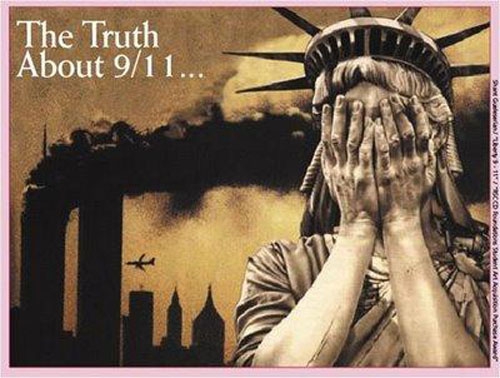
En conséquence, lorsque Muhammad ibn Abd al Wahhab est arrivé à Ad Diriyah, les Al Saoud étaient prêts à le soutenir. En 1744, Muhammad ibn Saoud et Muhammad ibn Abd al Wahhab ont fait le serment musulman traditionnel de travailler ensemble à établir un État dirigé selon les principes islamiques. Jusqu’à cette époque, les Al Saoud avaient été considérés comme des chefs tribaux traditionnels dont le pouvoir était fondé sur une autorité ancienne, mais vague.
Muhammad ibn Abd al Wahhab a offert aux Al Saoud une mission religieuse clairement définie sur laquelle assoir leur autorité politique. Ce sentiment de mission religieuse imprègne toujours clairement l’idéologie politique de l’Arabie saoudite des années 1990.
Muhammad ibn Saoud a commencé sa mission à la tête d’une armée qui passait dans les villes et les villages du Najd pour éradiquer diverses pratiques populaires et chiites. La campagne a permis de rallier les villes et les tribus du Najd à la loi Al Saud-wahhabite. Dès 1765, les forces de Muhammad ibn Saoud avaient établi le wahhabisme – et avec lui l’autorité politique Al Saoud – sur la plus grande partie du Najd.
Donc: l’Arabie saoudite a été fondée sur la haine des musulmans chiites, et elle a été fondée sur un accord de 1744 entre un dignitaire fondamentaliste sunnite Wahhabite qui haïssait les Chiites, et Saoud, un chef de bande impitoyable, un accord aux termes duquel le clergé accorderait aux Saoud la sainte légitimité du Coran; et, en échange, les Saoud financeraient la propagation de la secte fanatique anti-chiite de Wahhab.
Tandis que l’aristocratie étasunienne veut, à tous prix, conquérir la Russie, l’aristocratie Saoudienne veut, à tous prix, conquérir l’Iran.
Voici ce que le prince saoudien Al-Walid ben Talal al-Saoud aurait dit à ce sujet le 27 octobre 2015, dans le journal Al Qabas du Koweït :
De mon point de vue, le litige du Moyen-Orient est une question de vie ou de mort pour le Royaume d’Arabie saoudite, et je sais que les Iraniens cherchent à renverser le régime saoudien en jouant la carte palestinienne, et donc, pour déjouer leur complot, l’Arabie Saoudite et Israël doivent renforcer leurs relations et former un front uni pour contrecarrer le programme ambitieux de Téhéran.
L’ennemi, pour les aristocrates saoudiens, n’est pas Israël; c’est l’Iran. Ils détestent les Iraniens, plus encore qu’ils ne détestent les Russes. En fait, Talal a également dit ce jour-là : « Je me rangerai aux côtés de la nation juive et de ses aspirations démocratiques si une Intifada palestinienne (un soulèvement) se déclenche. » Les Israéliens haïssaient les Iraniens autant que les Iraniens détestaient les Israéliens, et le Prince Talal accueillait les Israéliens dans sa mission de détruire l’Iran. Donc : les Saoud et Israël sont du même côté.
George W. Bush a continué la guerre de l’Amérique contre la Russie. Le 29 mars 2004, il a fièrement amené dans l’OTAN, le club militaire anti-russe, 7 nouveaux membres, qui étaient tous auparavant des alliés de la Russie au sein de l’URSS et du Pacte de Varsovie. Ces 7 pays sont: la Bulgarie, l’Estonie, la Lettonie, la Lituanie, la Roumanie, la Slovaquie et la Slovénie.
Barack Obama a poursuivi cette politique anti-russe, le 1er avril 2009, en ajoutant l’Albanie et la Croatie, puis en perpétrant un coup d’Etat en Ukraine qui a fait de ce pays un état fanatiquement anti-russe et anxieux d’adhérer à l’OTAN. Obama a également fait tuer le libyen pro-russe, Mouammar Kadhafi, et a fait attaquer le syrien pro-russe, Bachar al-Assad par les djihadistes armés par les familles royales d’Arabie saoudite et du Qatar.
L’ami des familles royales arabes, Oussama ben Laden, a finalement été sacrifié sur l’autel de l’objectif suprême de l’alliance américano-saoudienne, qui était d’éliminer le leader laïc pro-russe de l’Irak, Saddam Hussein, et d’engendrer (via le 11 septembre, etc.) l’hystérie collective qui a permis de faire passer des lois dictatoriales par le Congrès des États-Unis, et par de plus en plus de pays dans le reste de l’Empire américano-saoudien.
En outre, les industries militaires américaines se sont bien remises de l’effondrement boursier qui a précédé le 11 septembre, en grande partie grâce au succès de la campagne pour instiller la crainte de la Russie, à l’augmentation du terrorisme et à l’hystérie publique concomitante qui permet à un pays « démocratique » d’envahir et d’envahir encore pour tuer les combattants djihadistes que « nos amis » les Saoud et d’autres familles royales arabes sunnites financent.
Les Saoudiens sont actuellement très en colère contre Barack Obama pour avoir négocié sérieusement avec les Iraniens. Pour l’aristocratie américaine, la cible à détruire n’est pas l’Iran, mais la Russie. Obama représente l’aristocratie américaine, pas l’aristocratie saoudienne. Les aristocraties étasunienne et saoudienne n’ont pas les mêmes priorités.
Mais leur alliance a été très efficace. Peut-être que, lorsqu’il a surpris et même choqué sa CIA en lui répondant : « Nous ne sommes pas tout à fait prêt à examiner cette question. Nous ne voulons pas lancer le compte à rebours », George W. Bush avait déjà discuté en privé avec son pote Bandar Bush, de la manière d’atteindre les plus importants objectifs des aristocraties étasunienne et saoudienne ; et qu’ensemble ils ont mis sur pied ce plan, bien avant que la CIA n’en ait pris connaissance. Cela semble être l’explication la plus vraisemblable de la réponse énigmatique de Bush, le 10 juillet 2001.
Eric Zuesse | 18.11.2015
Historien d’investigation Eric Zuesse est l’auteur de They’re Not Even Close: The Democratic vs. Republican Economic Records, 1910-2010 et de CHRIST’S VENTRILOQUISTS: The Event that Created Christianity.
Notes :
* La Quatrième Dimension (The Twilight Zone) est une série télévisée américaine de science-fiction (Wikipedia)
** Le Government Accountability Office (GAO) est l’organisme d’audit, d’évaluation et d’investigation du Congrès des États-Unis chargé du contrôle des comptes publics du budget fédéral des États-Unis (Wikipedia).
*** https://share.america.gov/fr/la-strategie-de-securite-nat...
Article original: http://www.strategic-culture.org/news/2015/11/18/politico...
Traduction : Dominique Muselet
Source: http://arretsurinfo.ch/politico-rapporte-que-bush-savait-...
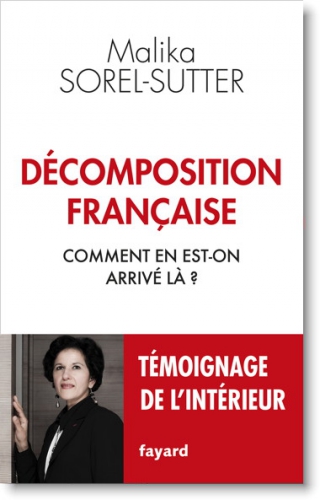 La droite avance souvent ses pions à découvert, et il est alors possible de l’affronter lorsque cela s’avère nécessaire pour défendre la république. La gauche préfère emprunter une tout autre approche. Les gens de gauche, pendant longtemps, ont eu plutôt tendance à avancer leurs pions en douce, le sourire aux lèvres, le catéchisme des belles valeurs en bandoulière, des valeurs nobles …
La droite avance souvent ses pions à découvert, et il est alors possible de l’affronter lorsque cela s’avère nécessaire pour défendre la république. La gauche préfère emprunter une tout autre approche. Les gens de gauche, pendant longtemps, ont eu plutôt tendance à avancer leurs pions en douce, le sourire aux lèvres, le catéchisme des belles valeurs en bandoulière, des valeurs nobles …


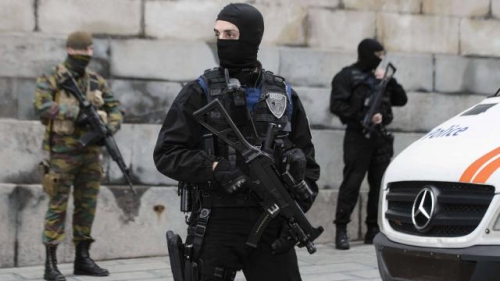


 del.icio.us
del.icio.us
 Digg
Digg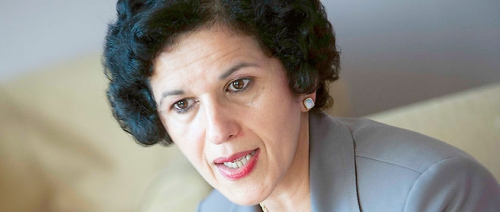

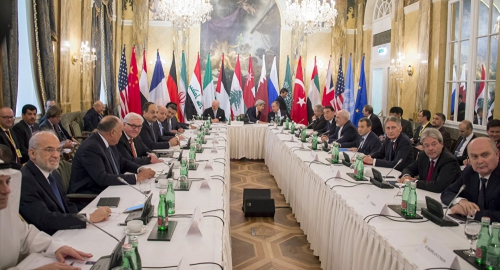

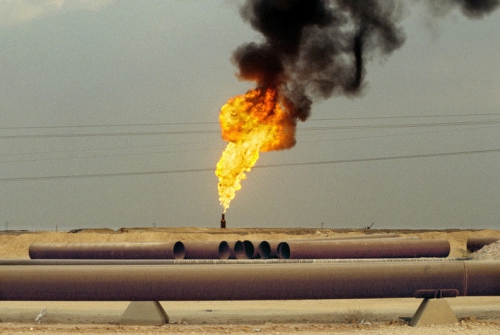
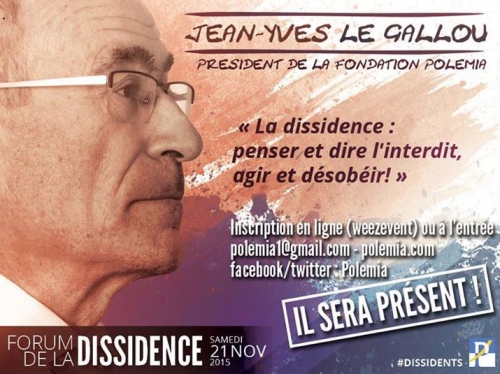
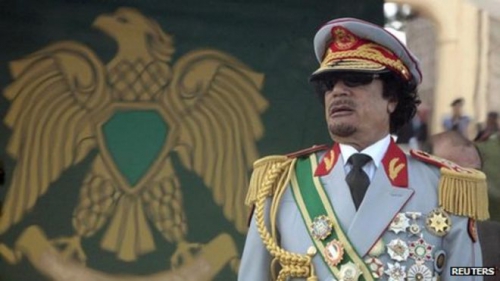


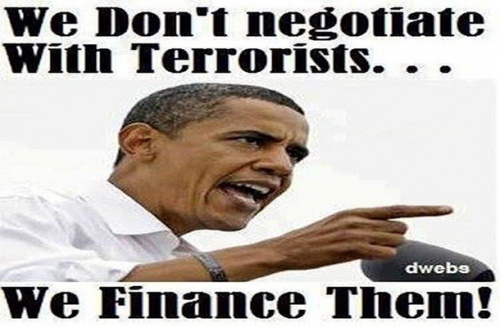
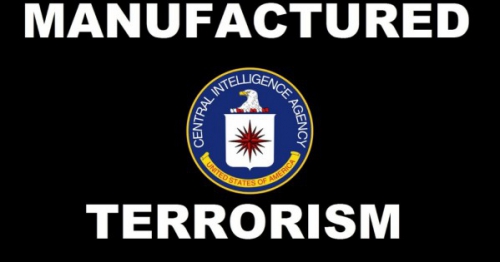
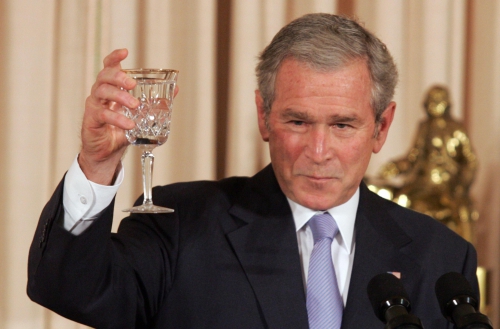
 Mais l’aristocratie américaine ne veut certainement pas que le Président, dont ils sont propriétaires, le fasse ; après tout, les Saoud leur ont toujours énormément rapporté. Comme Thalif Deen de Inter Press Service l’
Mais l’aristocratie américaine ne veut certainement pas que le Président, dont ils sont propriétaires, le fasse ; après tout, les Saoud leur ont toujours énormément rapporté. Comme Thalif Deen de Inter Press Service l’
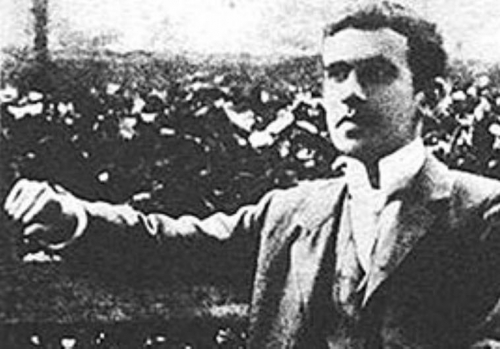
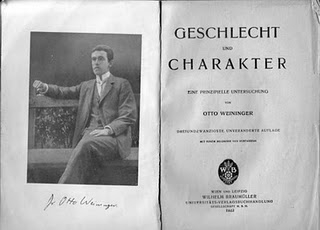 La pensée de Weininger apparaît moins « problématique » si on ne l’appréhende pas comme une description tronquée ou déformée de la réalité, perçue à travers des préjugés « sexistes », mais comme constitutive de modèles ou de types « platoniciens » que cette réalité n’incarne que partiellement. Et c’est d’ailleurs ce qu’il déclare formellement : « La seule voie qui conduise à pouvoir étudier, dans sa réalité, toute opposition de sexe est la reconnaissance du fait que l’homme et la femme ne sont concevables que comme types, et que les hommes et les femmes réels, considérés dans tout ce que leur réalité a de déroutant et qui ne cessera de réalimenter toujours les mêmes controverses, ne sont qu’une composition de ces deux types. » Et pour ce qui est des Juifs, il écrivait : « Lorsque je parle du Juif, je ne veux pas parler d’un type d’homme particulier, mais de l’homme en général en tant qu’il participe de l’idée platonicienne de la judéité. » Ayons donc garde de voir dans la définition des principes masculin et du féminin une annonce de la « théorie du genre » visant à effacer leurs frontières… Loin d’être pour Weininger des créations de la seule culture, la « masculin » et le « féminin », même s’ils ne sont pas exclusifs dans un individu, se donnent bien pour des facteurs agissants et non dérivés ou illusoires. Et, sous ce premier rapport, la théorie weiningerienne se donnerait plutôt comme une antidote à ladite théorie… Il reste que la femme « empirique » étant toujours pour l’homme une tentation, sa rédemption – ou « émancipation » véritable – consisterait pour elle à renoncer à séduire… Et il y a là, sous ce second rapport, un vrai problème d’éducation, affirme Weininger : « Il faut enlever à la femme l’éducation de la femme et ENLEVER À LA MÈRE L’ÉDUCATION DE L’HUMANITÉ. Ce serait la première chose à faire pour mettre la femme au service de l’idée d’humanité, qu’elle a jusqu’ici plus que personne empêchée de se réaliser. » En effet, « le dernier moyen de toute pédagogie maternelle est de menacer la fille rebelle de ne pas trouver de mari. » Un programme dont Weininger note cependant qu’il n’a à peu près aucune chance de se réaliser, ce dont tout mâle non kantien aura tout lieu de se féliciter…
La pensée de Weininger apparaît moins « problématique » si on ne l’appréhende pas comme une description tronquée ou déformée de la réalité, perçue à travers des préjugés « sexistes », mais comme constitutive de modèles ou de types « platoniciens » que cette réalité n’incarne que partiellement. Et c’est d’ailleurs ce qu’il déclare formellement : « La seule voie qui conduise à pouvoir étudier, dans sa réalité, toute opposition de sexe est la reconnaissance du fait que l’homme et la femme ne sont concevables que comme types, et que les hommes et les femmes réels, considérés dans tout ce que leur réalité a de déroutant et qui ne cessera de réalimenter toujours les mêmes controverses, ne sont qu’une composition de ces deux types. » Et pour ce qui est des Juifs, il écrivait : « Lorsque je parle du Juif, je ne veux pas parler d’un type d’homme particulier, mais de l’homme en général en tant qu’il participe de l’idée platonicienne de la judéité. » Ayons donc garde de voir dans la définition des principes masculin et du féminin une annonce de la « théorie du genre » visant à effacer leurs frontières… Loin d’être pour Weininger des créations de la seule culture, la « masculin » et le « féminin », même s’ils ne sont pas exclusifs dans un individu, se donnent bien pour des facteurs agissants et non dérivés ou illusoires. Et, sous ce premier rapport, la théorie weiningerienne se donnerait plutôt comme une antidote à ladite théorie… Il reste que la femme « empirique » étant toujours pour l’homme une tentation, sa rédemption – ou « émancipation » véritable – consisterait pour elle à renoncer à séduire… Et il y a là, sous ce second rapport, un vrai problème d’éducation, affirme Weininger : « Il faut enlever à la femme l’éducation de la femme et ENLEVER À LA MÈRE L’ÉDUCATION DE L’HUMANITÉ. Ce serait la première chose à faire pour mettre la femme au service de l’idée d’humanité, qu’elle a jusqu’ici plus que personne empêchée de se réaliser. » En effet, « le dernier moyen de toute pédagogie maternelle est de menacer la fille rebelle de ne pas trouver de mari. » Un programme dont Weininger note cependant qu’il n’a à peu près aucune chance de se réaliser, ce dont tout mâle non kantien aura tout lieu de se féliciter…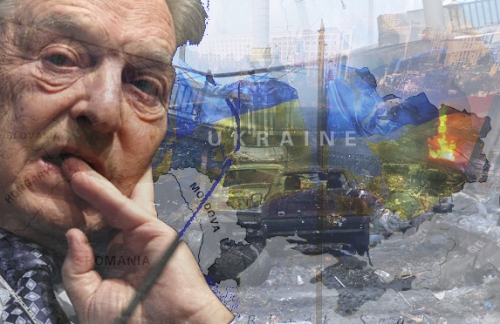
 Analyzing groups and organizations working with the Chesno, it turned out that the liberal and pro-European NGOs has close relations with the Ukrainian nationalist organizations and sometimes they are just the same institutions under different names.
Analyzing groups and organizations working with the Chesno, it turned out that the liberal and pro-European NGOs has close relations with the Ukrainian nationalist organizations and sometimes they are just the same institutions under different names.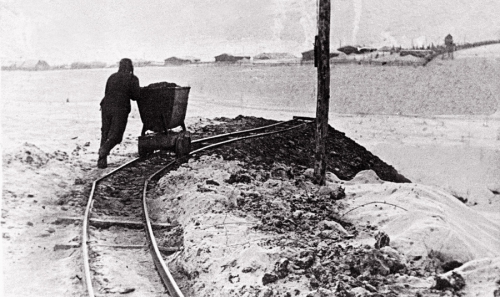
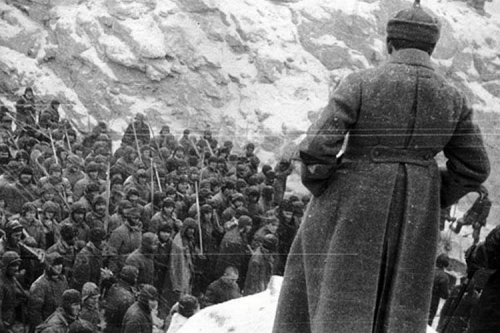

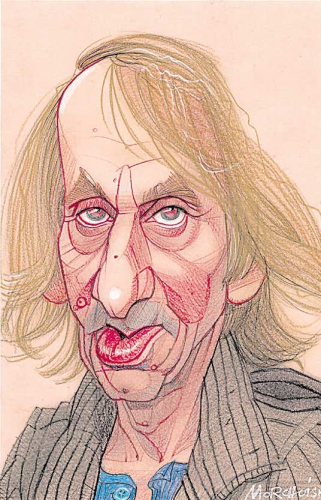 « La France résistera, dit-il. Les Français sauront résister, sans devoir étaler un héroïsme exceptionnel, sans même avoir besoin d’un sursaut collectif d’orgueil national.» «Keep calm and carry on, sois calme et va de l’avant, poursuit Houellebecq. Oui, nous ferons ainsi (même si – hélas – nous n’avons pas un Churchill pour guider le pays).» L’écrivain juge que si les Français sont plutôt «dociles» et se laissent gouverner facilement, «cela ne veut pas dire que ce sont des imbéciles». Leur défaut est un défaut de mémoire, d’où la nécessité de la leur rafraîchir.
« La France résistera, dit-il. Les Français sauront résister, sans devoir étaler un héroïsme exceptionnel, sans même avoir besoin d’un sursaut collectif d’orgueil national.» «Keep calm and carry on, sois calme et va de l’avant, poursuit Houellebecq. Oui, nous ferons ainsi (même si – hélas – nous n’avons pas un Churchill pour guider le pays).» L’écrivain juge que si les Français sont plutôt «dociles» et se laissent gouverner facilement, «cela ne veut pas dire que ce sont des imbéciles». Leur défaut est un défaut de mémoire, d’où la nécessité de la leur rafraîchir.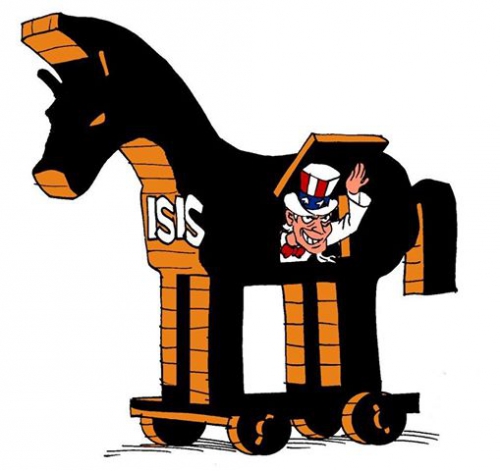
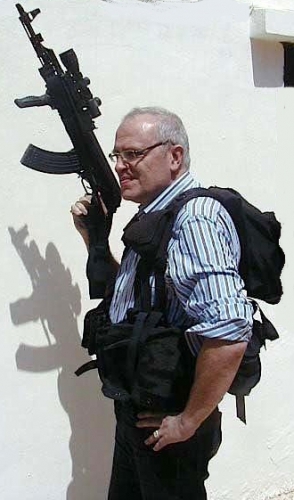 L’actualité, c’est-à-dire le Spectacle, abonde en déclarations et évènements dont l’accumulation suscite une zone d’incertitude entre le mensonge, l’oubli et l’indifférence, sur laquelle se fonde la politique, autre nom du Spectacle. Ainsi a-t-on peu commenté le chiffre donné par Bruxelles, la semaine dernière, à propos du nombre de migrants appelés, d’ici 2017, à aborder aux rives heureuses de l’Europe : 3 millions – le double, probablement, comme tout chiffre donné par les « instances officielles », et sans préciser s’il tient compte de ceux qu’on commence à appeler les « réfugiés climatiques », auquel cas le chiffre devrait être multiplié par trois ou quatre, ce qui, une fois encore, me fait songer que les espaces déserts du Massif central ne resteraient plus dépeuplés.
L’actualité, c’est-à-dire le Spectacle, abonde en déclarations et évènements dont l’accumulation suscite une zone d’incertitude entre le mensonge, l’oubli et l’indifférence, sur laquelle se fonde la politique, autre nom du Spectacle. Ainsi a-t-on peu commenté le chiffre donné par Bruxelles, la semaine dernière, à propos du nombre de migrants appelés, d’ici 2017, à aborder aux rives heureuses de l’Europe : 3 millions – le double, probablement, comme tout chiffre donné par les « instances officielles », et sans préciser s’il tient compte de ceux qu’on commence à appeler les « réfugiés climatiques », auquel cas le chiffre devrait être multiplié par trois ou quatre, ce qui, une fois encore, me fait songer que les espaces déserts du Massif central ne resteraient plus dépeuplés.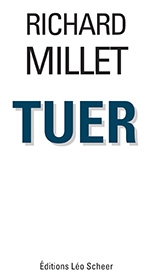 Les conséquences de ce peuplement forcé sont incalculables, l’immigration extra-européenne contribuant déjà, depuis quarante ans, à la destruction des nations qui ont donné le meilleur de la civilisation ; des nations qui ne sauraient être considérées du point de vue ethnique comme les Etats-Unis d’Amérique, quel que soit leur degré d’avilissement et de tiers-mondisation (comme on peut le constater avec le patron de Google venu faire l’aumône de 83 millions d’euros à des start-up françaises, générosité intéressée qu’on croyait réservée à l’Afrique). La question du nombre est ici démoniaque, car une force illégitime que le « sens de l’histoire » tente de faire passer pour irrésistible. J’élève là-contre une voix solitaire, refusant de voir la culture (et non « ma » culture) sacrifiée à ce nombre qui arrive avec ses lois, son code civil, son refus de s’assimiler. Je refuserais de voir, comme au Canada, pays insignifiant à tout point de vue, et non pas une nation mais un conglomérat multiculturel, un ministre de la défense sikh arborant barbe et turban. Pourquoi pas une ministre des affaires sociales en burqa ou un secrétaire d’Etat mélanésien avec un os dans le nez ! Rien de plus contraire à l’essence d’un pays comme la France et des nations européennes. Ce serait aussi illégitime que de voir James Bond (le personnage créé par Ian Fleming étant, comment le nier, un Blanc) incarné par un acteur noir, comme le bruit court à ce sujet. Non que j’attache de l’importance à James Bond ; mais il ne viendrait à l’idée de personne de faire incarner Porgy et Bess par des chanteurs blancs. James Bond est un des marqueurs du Spectacle comme il y en a du cancer. Le cancer du multiculturalisme est particulièrement à la hausse, tout comme celui de la confusion qui fait prendre Hollande pour exégète de Clausewitz, Jérôme Garcin pour un écrivain et André Glucksmann, qui vient de mourir et dont il ne restera rien, pour un penseur : le seule penseur considérable de notre temps, avec Emmanuel Levinas et Gilles Deleuze, c’est René Girard, mort la semaine dernière, et dont l’œuvre continue à agir…
Les conséquences de ce peuplement forcé sont incalculables, l’immigration extra-européenne contribuant déjà, depuis quarante ans, à la destruction des nations qui ont donné le meilleur de la civilisation ; des nations qui ne sauraient être considérées du point de vue ethnique comme les Etats-Unis d’Amérique, quel que soit leur degré d’avilissement et de tiers-mondisation (comme on peut le constater avec le patron de Google venu faire l’aumône de 83 millions d’euros à des start-up françaises, générosité intéressée qu’on croyait réservée à l’Afrique). La question du nombre est ici démoniaque, car une force illégitime que le « sens de l’histoire » tente de faire passer pour irrésistible. J’élève là-contre une voix solitaire, refusant de voir la culture (et non « ma » culture) sacrifiée à ce nombre qui arrive avec ses lois, son code civil, son refus de s’assimiler. Je refuserais de voir, comme au Canada, pays insignifiant à tout point de vue, et non pas une nation mais un conglomérat multiculturel, un ministre de la défense sikh arborant barbe et turban. Pourquoi pas une ministre des affaires sociales en burqa ou un secrétaire d’Etat mélanésien avec un os dans le nez ! Rien de plus contraire à l’essence d’un pays comme la France et des nations européennes. Ce serait aussi illégitime que de voir James Bond (le personnage créé par Ian Fleming étant, comment le nier, un Blanc) incarné par un acteur noir, comme le bruit court à ce sujet. Non que j’attache de l’importance à James Bond ; mais il ne viendrait à l’idée de personne de faire incarner Porgy et Bess par des chanteurs blancs. James Bond est un des marqueurs du Spectacle comme il y en a du cancer. Le cancer du multiculturalisme est particulièrement à la hausse, tout comme celui de la confusion qui fait prendre Hollande pour exégète de Clausewitz, Jérôme Garcin pour un écrivain et André Glucksmann, qui vient de mourir et dont il ne restera rien, pour un penseur : le seule penseur considérable de notre temps, avec Emmanuel Levinas et Gilles Deleuze, c’est René Girard, mort la semaine dernière, et dont l’œuvre continue à agir…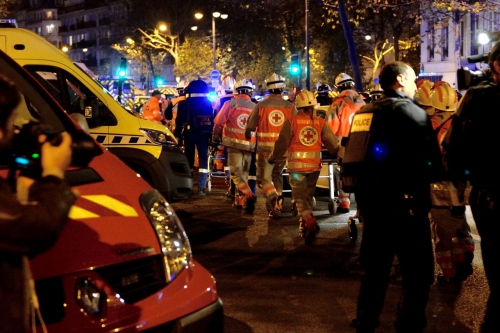
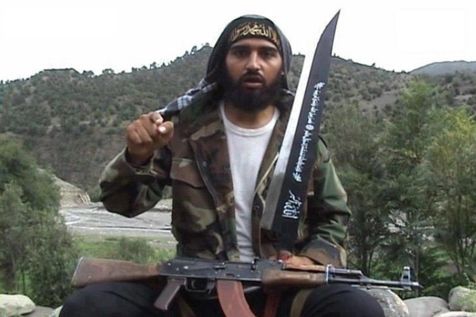
 De islam is daar een extreme exponent van, zie Boko Haram, maar ook het ‘blanke’, Europese vooruitgangsdenken van de pionier-ontdekkingsreiziger is mannelijk-imperialistisch. Neen, we huwen geen kindbruidjes (meer) uit, maar de onderliggende macho-cultuur is ook de onze. Poetin, Assad, maar ook Juncker of Verhofstadt of Michel, kampioenen van de democratie, zijn in hetzelfde bedje ziek: voluntaristische ego’s die’ willen ‘scoren’ en van erectie tot erectie evolueren. Altijd is er een doel, een schietschijf, een trofee.
De islam is daar een extreme exponent van, zie Boko Haram, maar ook het ‘blanke’, Europese vooruitgangsdenken van de pionier-ontdekkingsreiziger is mannelijk-imperialistisch. Neen, we huwen geen kindbruidjes (meer) uit, maar de onderliggende macho-cultuur is ook de onze. Poetin, Assad, maar ook Juncker of Verhofstadt of Michel, kampioenen van de democratie, zijn in hetzelfde bedje ziek: voluntaristische ego’s die’ willen ‘scoren’ en van erectie tot erectie evolueren. Altijd is er een doel, een schietschijf, een trofee.